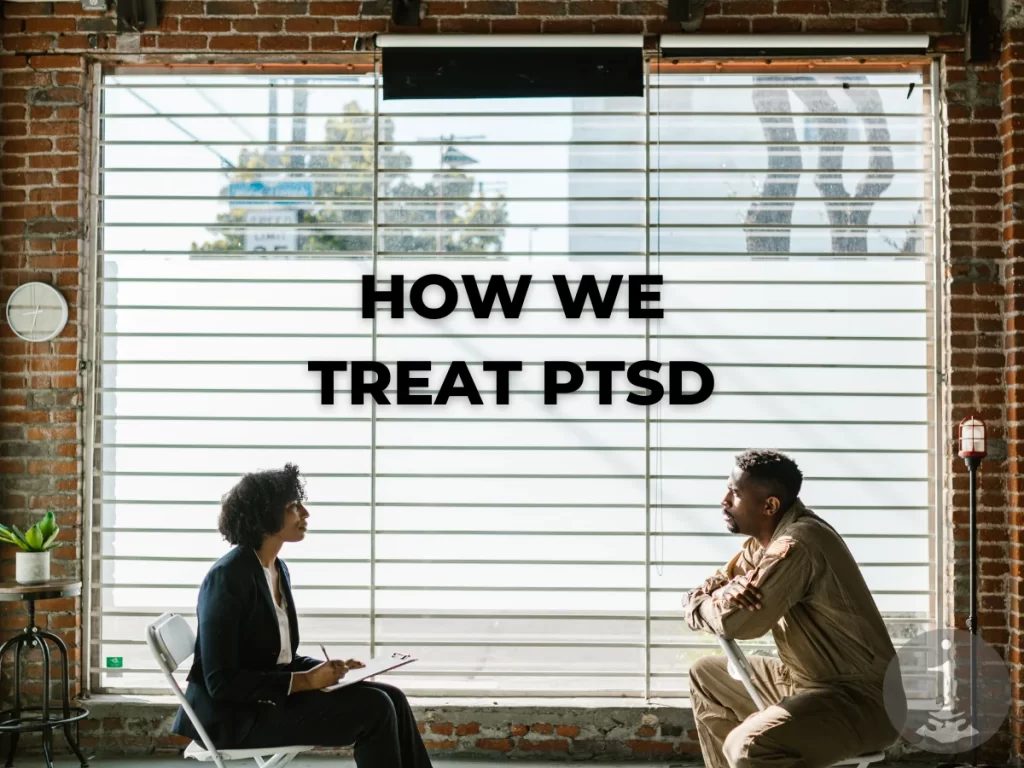Post-traumatic stress disorder (PTSD) is a mental health condition that can manifest in individuals who have encountered or witnessed a traumatic event, series of events, or circumstances that can be emotionally or physically damaging or life-threatening, impacting their mental, physical, social, or spiritual well-being. Examples of traumatic experiences that can lead to PTSD symptoms: include natural disasters, serious accidents, terrorist acts, war/combat, rape/sexual assault, historical trauma, intimate partner violence, and bullying.

PTSD has been referred to by various names in the past, including “shell shock” during World War I and “combat fatigue” after World War II. However, it is important to note that PTSD does not exclusively affect combat veterans but can affect people of any ethnicity, nationality, culture, and age.
In this blog, we will discuss the symptoms and causes of PTSD.
Table of Contents
TogglePTSD Symptoms
The symptoms of PTSD can vary from person to person and can be classified into four main categories: re-experiencing, avoidance, hyper-arousal, and negative thoughts and mood. It is important to note that specific symptoms vary in their severity.
Re-experiencing symptoms
- One of the main diagnostic clusters of PTSD includes re-experiencing or reliving the symptoms. This happens when individuals with PTSD diagnosis experience intrusive and distressing memories, nightmares, or flashbacks of the traumatic event and feel as though the event is occurring again.
These memories can be triggered by certain sounds, smells, or sensations that remind them of the trauma. They may also have intense emotional or physical reactions to these triggers.
Other re-experiencing symptoms may include:
- Flashbacks or nightmares related to the traumatic event
- Physical sensations or reactions triggered by reminders of the event, such as sweating or an increased heart rate
- Emotional distress when triggered
- Persistent negative thoughts or emotions related to the trauma
Needless to say that this experience can be extremely distressing and may interfere with an individual’s daily life, causing anxiety and avoidance behaviours. Re-experiencing symptoms can be triggered by external stimuli, such as seeing an object or being in a particular environment that reminds the individual of the traumatic event, or by internal cues such as intrusive thoughts or memories.
Avoidance symptoms
- Naturally, individuals suffering from PTSD try their best to avoid places, people, events or activities that remind them of the traumatic event. Avoidance symptoms involve actively trying to avoid thoughts, feelings, or reminders of the traumatic event. Here are some ways in which avoidance symptoms manifest:
- Avoiding places, people, or situations that remind the individual of the traumatic event
- Refusing to talk or think about the event, or blocking out memories of the trauma
- Avoiding activities or hobbies that were previously enjoyed because they now trigger memories or feelings related to the trauma
- Feelings of detachment or emotional numbing, where the individual feels disconnected from others or experiences a decreased ability to feel emotions
- Difficulty experiencing positive emotions or feeling hopeful about the future
Like re-experiencing symptoms, avoidance can also interfere with an individual’s daily life and functioning.
This may lead to isolation, and difficulty in maintaining relationships, and may even exacerbate other symptoms of PTSD such as re-experiencing and hyperarousal.
Unfortunately, patients avoid talking about the trauma or their feelings related to it. They may feel emotionally numb or detached from others and have difficulty experiencing positive emotions.
Hyperarousal symptoms
- People with hyper-arousal symptoms may constantly feel on edge, irritable, or easily startled. They may have trouble sleeping, have difficulty concentrating, or have a heightened sense of vigilance or alertness. Individuals experience a state of increased arousal or heightened anxiety that persists even when there is no immediate threat present.
Examples of hyper-arousal symptoms may include:
- Difficulty falling asleep or staying asleep
- Irritability or angry outbursts
- Hyper-vigilance
- Feeling jumpy or easily startled
- Feeling restless or unable to sit still
- Lack of focus
- Experiencing memory problems
- Rapid heart rate, sweating, or trembling
Cognitive symptoms
- Individuals with post-traumatic stress disorder (PTSD) may experience cognitive symptoms, which involve negative thoughts and beliefs about themselves or the world. According to the National Center for PTSD, these symptoms can make it challenging for individuals to trust others, experience happiness, and recall important aspects of the traumatic event.
Additionally, individuals may experience feelings of guilt or self-blame related to the traumatic event. People with cognitive symptoms often have a distorted view of themselves or the world around them and feel hopeless about the future.
Learn about Trauma Counselling
Causes of PTSD
PTSD can develop after a person experiences or witnesses a traumatic event. Not everyone who experiences trauma will develop PTSD, and the severity of the trauma does not always predict the likelihood of developing PTSD. Some factors that may increase the risk of developing PTSD include:
- Personal factors such as previous trauma, history of mental health conditions, family history, isolation, childhood adversity or abuse.
- Trauma-related factors like direct or indirect exposure to traumatic events or violence, experiencing multiple traumas or ongoing traumatic events.
- Biological factors are caused by genetics or changes in brain chemistry and function.

Treatment for PTSD
PTSD can be treated with a combination of medication and therapy approaches. The ultimate aim is to reduce the symptoms and improve the quality of the individual’s life, helping them regain a sense of control. Mental health specialists use a combination of treatments such as psychotherapy(particularly cognitive behavioural therapy), EMDR, medication, etc to help patients cope with the symptoms. It is also beneficial to make lifestyle changes and seek support from your community to overcome PTSD. It is essential to work with a mental health practitioner to identify the best line of treatment for each individual. Our PTSD therapy services are available in Calgary, Edmonton and Vancouver.